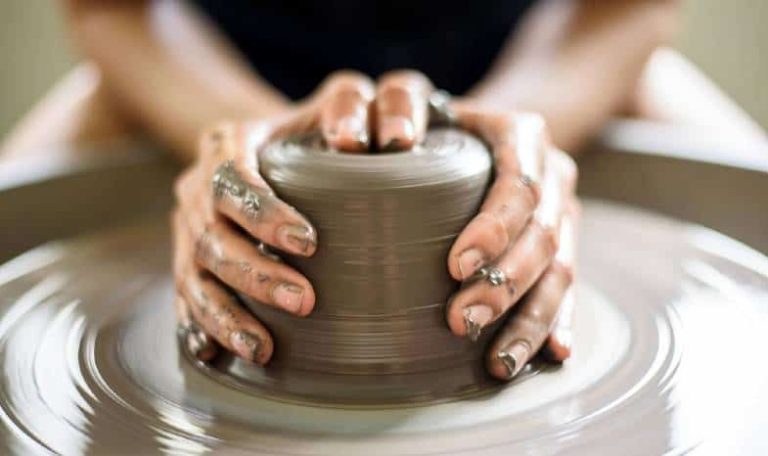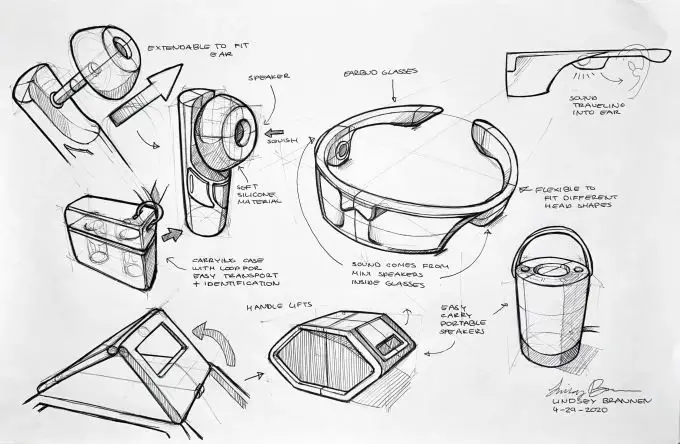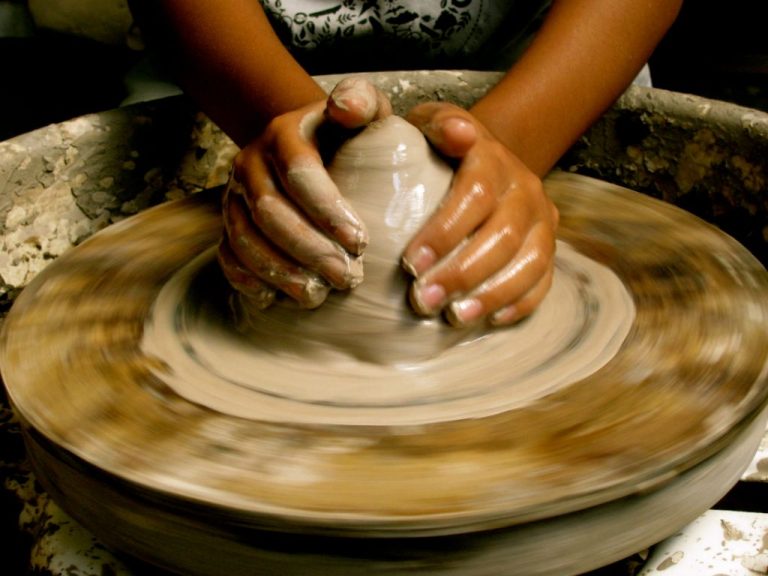How Do You Make Clay For Modeling Clay?
Modeling clay, also known as plasticine, is a moldable clay material that is often used for arts and crafts projects. Homemade modeling clay has many benefits compared to storebought versions. It’s easy to customize the texture and colors, and add scents like cinnamon or lavender. Making your own also eliminates any toxic ingredients or dyes found in commercial products.
While basic clay recipes only require a few ingredients like flour, salt, oil, and water, the preparation process is important. Properly cooked clay has a smooth, pliable texture that’s perfect for sculpting and modeling. With the right ratios and techniques, you can create non-sticky, non-crumbling clay that air dries naturally over time.
Crafting modeling clay at home allows endless creativity. You control the colors, scents, and consistency. Plus it’s fun for kids and adults to make together. The finished projects can be displayed around the home or given as gifts. Follow the steps below to whip up your own homemade clay that’s perfect for sculpting and modeling.
Required Ingredients
The key ingredients needed to make modeling clay are:
- Flour – All-purpose flour works best. The starch in the flour gives the clay its moldable texture.
- Salt – Table salt or sea salt. The salt interacts with the flour to create the clay’s doughy consistency.
- Water – Tap water works fine. The water hydrates the flour and salt into a pliable clay material.
- Vegetable Oil – A small amount of oil makes the clay smooth and less sticky. Opt for canola, vegetable, or olive oil.
- Food Coloring (optional) – Liquid or gel food coloring can be added to create brightly colored clay if desired.
- Essential Oils (optional) – A few drops of essential oils will give the clay pleasing scents. Lavender, lemon, and peppermint are popular choices.
Having the right proportions of these simple kitchen ingredients is the key to creating high quality homemade modeling clay.
Recipe Ratios
The typical recipe for homemade modeling clay calls for 2 parts flour, 1 part salt, 1 part water, a few teaspoons of oil, and a little cream of tartar or lemon juice. However, you can adjust these ratios to achieve your desired consistency and texture.
More flour will result in a stiffer, less sticky clay that holds its shape well when sculpted. Adding more water makes the clay smoother and more pliable, but too much water can make the clay too sticky and soft.
Similarly, extra oil makes the clay more flexible and smooth in texture, while more salt increases firmness and makes the clay less sticky. More cream of tartar or lemon juice helps the clay harden better during cooking.
Some recipes use a 1:1 ratio of flour to salt for very firm sculpting clay, while a 2:1 ratio provides more pliability. A 1:1 ratio of flour to water is common, but you can do 1.5:1 or 1:1.5 depending on the desired consistency.
In general, it’s best to start with a basic 2:1:1 ratio of flour to salt to water, then adjust from there by adding slightly more flour, water, or oil until you achieve the perfect consistency for your modeling clay projects.
Mixing the Ingredients
Properly mixing the ingredients is a crucial step in making high quality modeling clay. Here is a step-by-step process for combining the ingredients:
1. In a large bowl, combine the flour, salt, oil, and water. Slowly mix the dry ingredients together first before adding the wet ingredients.
2. Use your hands to knead the mixture thoroughly until it forms a uniform dough with no dry pockets of flour remaining. Knead for 3-5 minutes.
3. The clay should be smooth, pliable, and not sticky. If it’s too dry and crumbly, spray and knead in a little water. If it’s too wet and sticky, knead in a bit more flour.
4. Keep kneading until you’ve reached the perfect smooth, doughy consistency that’s neither too dry nor too wet.
5. Cover the dough and let it rest for 15 minutes which allows the ingredients to fully incorporate.
6. Knead the dough lightly once more before moving onto the cooking process.
With the dry and wet ingredients thoroughly combined and kneaded, you’ll have a soft non-stick dough that’s ready for cooking.
Cooking the Clay
Properly cooking the clay is essential for achieving the right texture and consistency for modeling. There are a couple methods you can use to cook homemade clay:
Microwave
The microwave provides a quick and easy way to cook modeling clay. Place your clay mixture in a microwave-safe container like a glass measuring cup or bowl. Microwave the clay on high, stirring every 1-2 minutes, until it thickens to a doughy consistency, about 5-8 minutes total. Be careful not to overcook the clay as it can become tough and brittle.
Stovetop
You can also cook clay on the stovetop in a saucepan over medium heat. Cook the clay, stirring regularly, until it reaches 165°F to 275°F on a kitchen thermometer. This usually takes 15-25 minutes. Monitor the temperature carefully so the clay doesn’t overheat. The clay is ready when it forms a smooth, warm dough that holds its shape.
Properly cooked clay should be smooth, pliable, and not sticky. If the clay is too soft, continue cooking it. If it becomes stiff and crumbly, you’ve overcooked it. Letting the clay cool before sculpting will make it easier to handle and shape.
Cooling and Storing
After cooking the clay, it’s crucial to let it cool completely before attempting to sculpt with it. Hot modeling clay can burn or irritate skin. Allow the clay to cool down to room temperature, which usually takes 1-2 hours.
Proper storage is also key to increasing the shelf life of homemade modeling clay. Air-tight containers like Tupperware or Ziploc bags work well for storage. Make sure to press out any air bubbles before sealing the container.
For even longer shelf life, store the cooled clay in the refrigerator inside a sealed container. The cold temperature will keep the clay soft and pliable for months. Let refrigerated clay sit out for 15-20 minutes before sculpting to return it to room temperature.
Coloring and Scenting
Adding color and scent to your homemade clay can make it more fun to work with. Here are some tips for coloring and scenting your clay:
To color the clay, add a few drops of liquid food coloring and knead it in thoroughly until the desired hue is achieved. Start with just a drop or two, as the color will deepen the more you knead it in. Have fun experimenting with mixing colors to create new shades.
For scented clay, add a few drops of essential oils like lavender, lemon, peppermint or vanilla. Start with 3-5 drops per 1 cup of clay. The scent will get stronger the more oil you add. Fold the oil in completely to disperse it evenly. Too much oil can make the clay sticky.
When coloring and scenting clay, make sure to mix very well so the color and fragrance are evenly distributed. Test a small piece first before coloring a whole batch. Keep in mind that scents may fade over time.
Get creative with different color combinations and essential oil blends! It’s a great sensory activity for kids. Just be sure to use food-safe ingredients.
Sculpting with Clay
Sculpting with modeling clay allows for endless creativity. Here are some tips for sculpting smooth or textured pieces:
For smooth sculptures:
- Keep your tools and hands wet while sculpting to avoid dragging and tearing the clay
- Use plastic sculpting tools instead of wood or metal, which can leave grooves
- Switch to softer clay if your original clay is too firm
- Gently smoothen areas by pressing a fingertip or silicone tool into the clay and swirling gently
For textured sculptures:
- Use crumpled aluminium foil to press patterns into the clay
- Use a serrated clay tool, stiff brush or toothpick to scratch textures
- Press objects like shells, keys, coins, etc. into the clay to imprint patterns
- Roll over the clay with a rolling pin that has texture, like ridges
Recommended tools and supplies:
- Clay sculpting tools – metal, plastic or silicone tipped
- Rolling pin, acrylic roller
- Plastic or wood modeling sticks
- Clay cutting wire
- Acrylic rods for smoothing
- Textured items for imprinting – shells, lace, coins, etc.
- Aluminum foil or bubble wrap for texturing
- Non-stick work surface like canvas or plastic
Project Ideas
Making your own modeling clay opens up a world of DIY craft projects. Here are some fun ideas to try:
DIY Clay Jewelry
Turn your homemade clay into beautiful jewelry pieces. Make beads in different shapes, colors, and designs. String them together into necklaces, bracelets, and more. You can also sculpt clay charms like hearts, stars, animals, and initials.
Miniature Figurines
Sculpt tiny clay figurines to use in dioramas, roleplaying games, or as cake topper decorations. Make little people, fantasy creatures, animals, food items, vehicles, buildings, and anything else you can imagine.
Ornaments
Make personalized Christmas tree ornaments out of clay. Imprint names, dates, or designs on circular clay cutouts. Add color and glitter to make them sparkle. You can also sculpt 3D shapes like stars, snowflakes, reindeer, and more.
Magnets
Turn your sculptures into magnets to decorate fridges and lockers. Make tiles with letters and numbers, cute critters, flowers, fruits, and anything else that inspires you. Just add a magnet back before baking.
Troubleshooting
If your homemade clay is cracking, crumbling, or drying out too quickly, there are some simple ways to fix it:
Fixing Cracking or Crumbling
If your clay is cracking or crumbling as you work with it, you likely need to add more oil. Knead in some additional vegetable oil, 1 teaspoon at a time, until the consistency is smooth and workable again. The clay should be firm but not brittle.
Rehydrating Dried Out Clay
If your clay has been exposed to air and dried out, you can bring it back to life. Simply add a few drops of water and knead it into the clay, 1 teaspoon at a time, until it becomes malleable again. Wrap it back up in an airtight bag or container for storage.
Ensuring Proper Storage
To prevent clay from drying out, always store it in an airtight container or zipper bag. Squeeze out excess air before sealing and keep clay in a cool, dark place. If storing clay for more than a few days, add a damp paper towel to the storage container to help maintain moisture levels.



